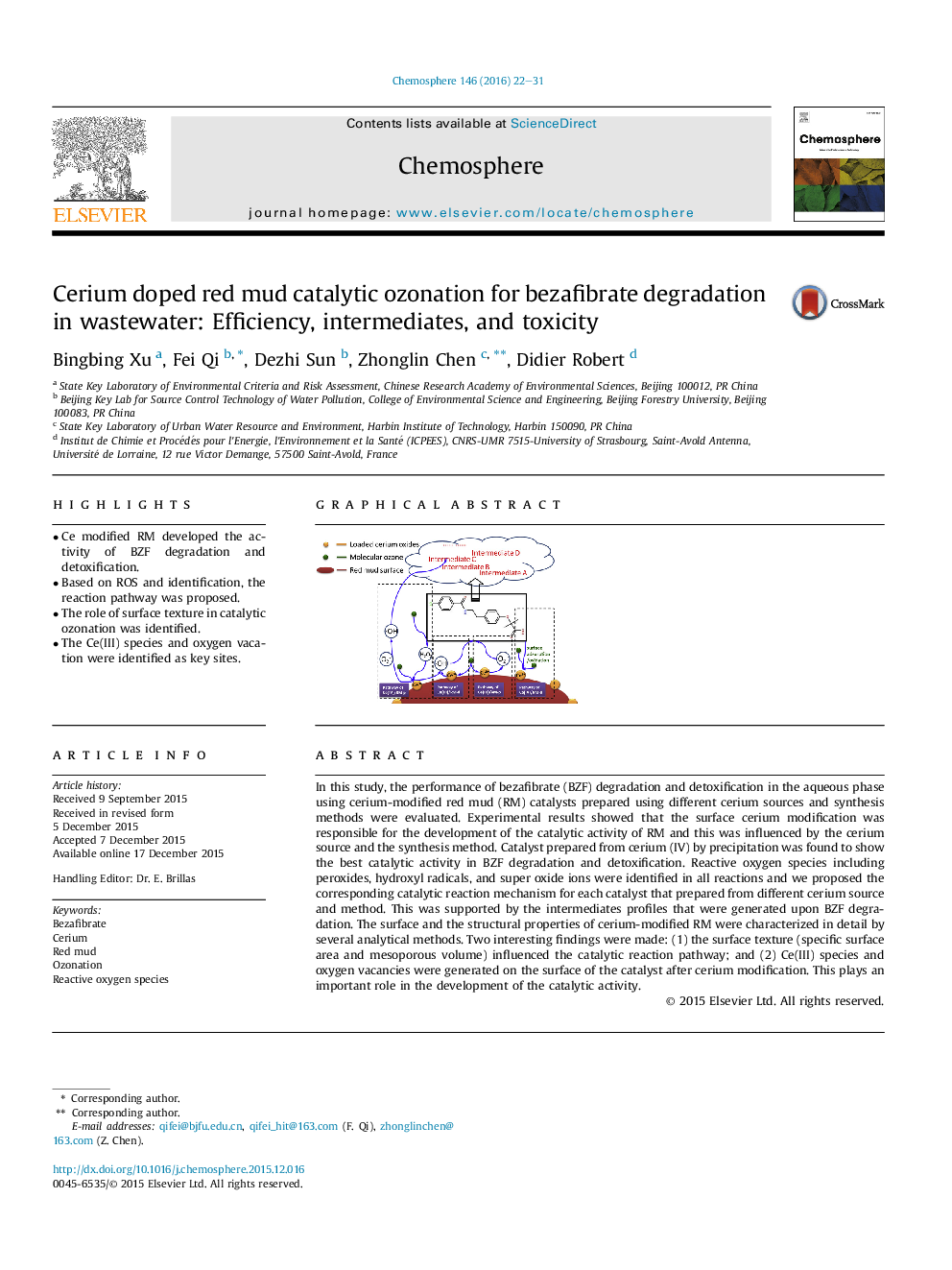| Article ID | Journal | Published Year | Pages | File Type |
|---|---|---|---|---|
| 4407970 | Chemosphere | 2016 | 10 Pages |
•Ce modified RM developed the activity of BZF degradation and detoxification.•Based on ROS and identification, the reaction pathway was proposed.•The role of surface texture in catalytic ozonation was identified.•The Ce(III) species and oxygen vacation were identified as key sites.
In this study, the performance of bezafibrate (BZF) degradation and detoxification in the aqueous phase using cerium-modified red mud (RM) catalysts prepared using different cerium sources and synthesis methods were evaluated. Experimental results showed that the surface cerium modification was responsible for the development of the catalytic activity of RM and this was influenced by the cerium source and the synthesis method. Catalyst prepared from cerium (IV) by precipitation was found to show the best catalytic activity in BZF degradation and detoxification. Reactive oxygen species including peroxides, hydroxyl radicals, and super oxide ions were identified in all reactions and we proposed the corresponding catalytic reaction mechanism for each catalyst that prepared from different cerium source and method. This was supported by the intermediates profiles that were generated upon BZF degradation. The surface and the structural properties of cerium-modified RM were characterized in detail by several analytical methods. Two interesting findings were made: (1) the surface texture (specific surface area and mesoporous volume) influenced the catalytic reaction pathway; and (2) Ce(III) species and oxygen vacancies were generated on the surface of the catalyst after cerium modification. This plays an important role in the development of the catalytic activity.
Graphical abstractFigure optionsDownload full-size imageDownload as PowerPoint slide
